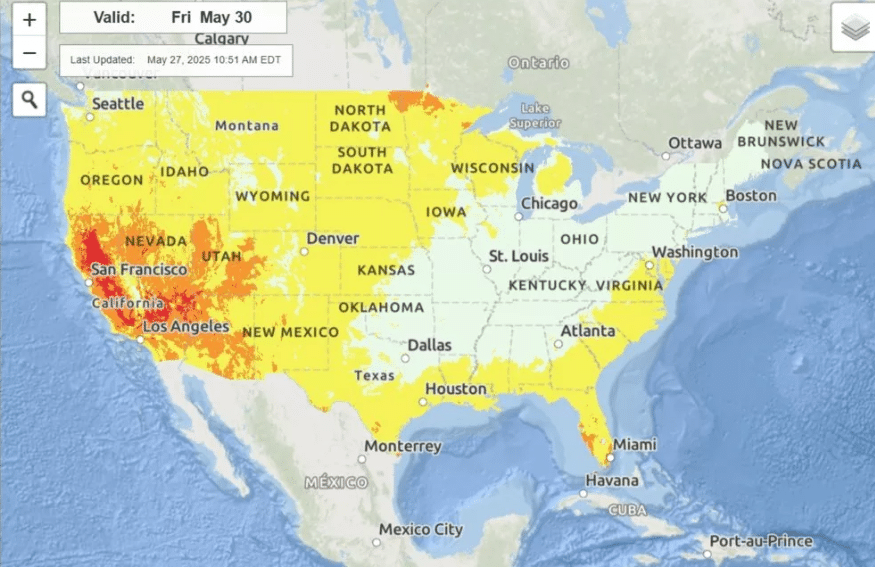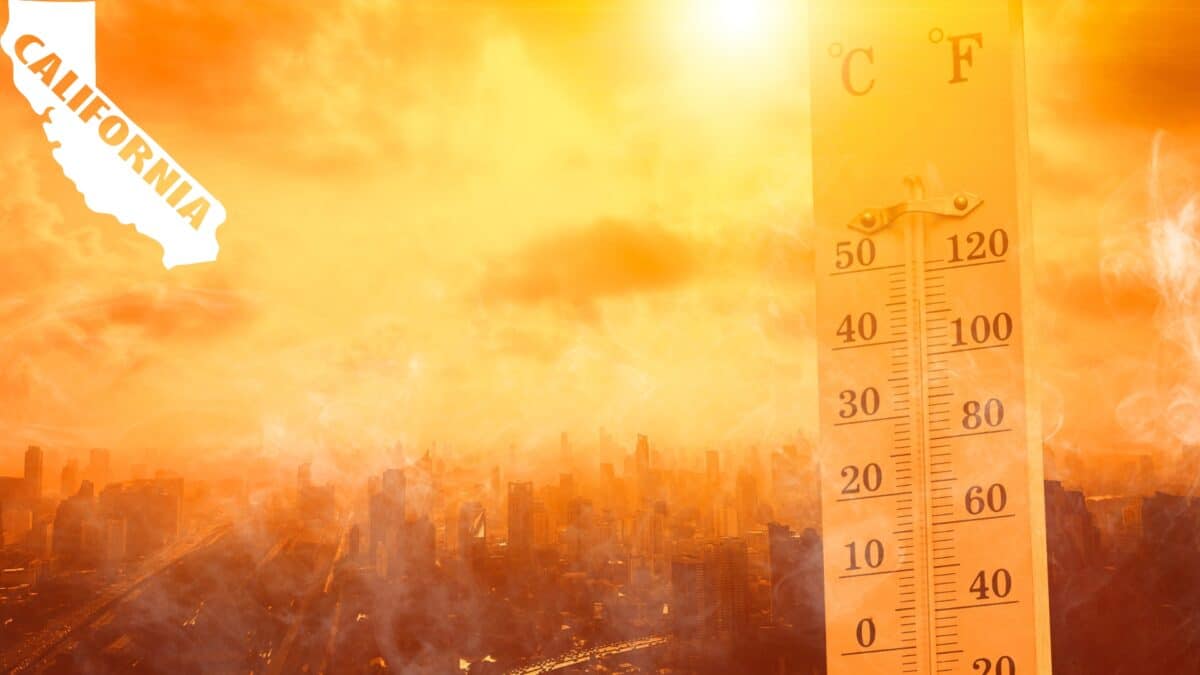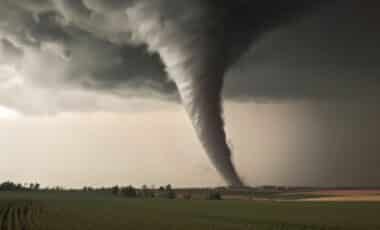Millions of residents across California are under official advisories to avoid sun exposure as a severe heat wave threatens to drive temperatures well above seasonal norms. From May 30 to June 1, the state is expected to endure extreme daytime highs, placing both urban and rural communities at increased risk of heat-related illnesses.
The warnings, issued by various branches of the National Weather Service (NWS), cover vast inland regions where triple-digit temperatures are forecast. The alerts come with specific health guidance, as authorities brace for possible strain on public health systems and increased wildfire risk.
Excessive Heat Watch Spans Key California Regions
An Excessive Heat Watch has been issued by the NWS offices in Hanford and Sacramento, covering areas including the San Joaquin Valley, Kern River Valley, Sacramento Valley, and Sierra Nevada foothills. Forecasts predict temperatures reaching 105°F (40.5°C) in several inland cities such as Fresno, Bakersfield, and Merced. Northern regions including Sacramento and the Carquinez Strait may see highs from 99°F to 109°F.
In addition to daily highs, overnight lows are expected to remain elevated—between 65°F and 75°F—limiting natural relief and increasing cumulative health risks. The NWS has warned that these conditions significantly raise the likelihood of heat exhaustion and heatstroke, particularly among outdoor workers, seniors, young children, and individuals without access to air conditioning.
Heat-Related Illness Concerns Prompt Medical Readiness
Michelle Shahbon, emergency room manager at Shasta Regional Medical Center, confirmed preparations are underway to handle a potential influx of heat-related cases. “We strongly advise residents to stay hydrated, limit outdoor activity during the hottest parts of the day, and keep an eye on those most at risk,” she told Newsweek. Symptoms such as dizziness, nausea, and heavy sweating should be treated as early signs of heat exhaustion and not be ignored.
Medical experts from UC Davis Health noted that while these temperatures are not unusual for the season, the intensity and duration could exacerbate underlying health issues. The public is being reminded not to leave children or pets unattended in vehicles, where interior temperatures can become lethal within minutes.
Coastal Areas Spared as Inland Heat Intensifies
While the heat wave’s most dangerous effects are concentrated inland, coastal regions are forecast to remain significantly cooler. Cities along the Pacific coast, such as San Francisco and Monterey, are expected to see highs in the 60s and 70s°F, offering temporary refuge for those who can relocate.
The NWS emphasized that the Central Valley, Sacramento, and foothill regions are likely to experience the worst of the heat. With agricultural laborers and construction workers especially vulnerable, state agencies are reinforcing workplace safety guidelines and urging employers to provide shaded areas and frequent hydration breaks.

Broader Regional Impact Includes Nevada and Death Valley
The heat event is not confined to California. Southern Nevada, including Las Vegas, Pahrump, and the Lake Mead area, is also under an Extreme Heat Watch. The NWS Las Vegas forecast indicates highs between 104°F and 109°F, with Death Valley expected to exceed 115°F (46°C). Authorities have extended heat advisories to account for these overlapping risks across state lines.
Meteorologists are closely monitoring fire danger levels, particularly in foothill and grassland regions, where dry vegetation combined with high heat increases the probability of wildfires. Local agencies are coordinating emergency services and warning residents to remain alert to potential evacuations if fire threats escalate.
Summer has not even started, but millions of California residents are being warned to avoid sun exposure as an extreme heat wave is expected for much of the state, with temperatures forecast to surpass 100 degrees in multiple regions. https://t.co/hNC7qXg8iM pic.twitter.com/g7pn8k73tF
— George P (@PrinceGeorgeK) May 28, 2025
National Weather Service monitors Evolving Threat
The NWS continues to update its HeatRisk maps and advisories, reflecting real-time changes in atmospheric conditions. On social media, officials from the Hanford and Sacramento offices have reiterated the need for caution. “Max temps will rise well above normal, with highs up to 105°F and lead to Major Heat Risk,” said NWS Hanford. NWS Sacramento added: “Moderate to Major HeatRisk is in the forecast. Widespread triple digits are possible on Friday, with near record to record highs.”
Residents are encouraged to stay informed through official weather bulletins and to adhere strictly to public health recommendations. The situation remains dynamic as meteorologists and emergency planners track how long the hazardous conditions will persist.









